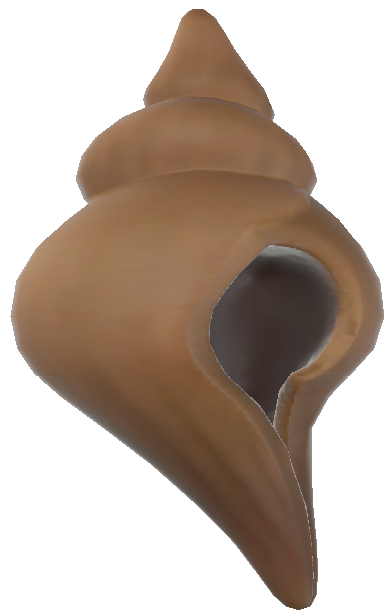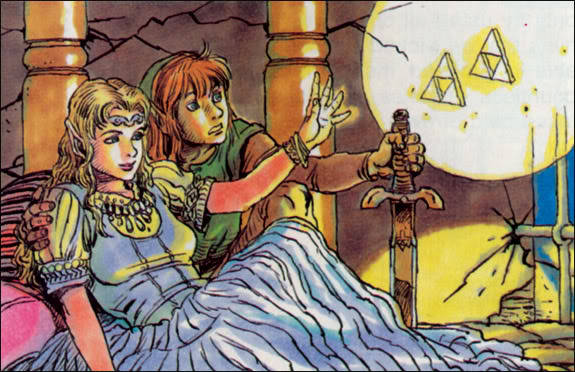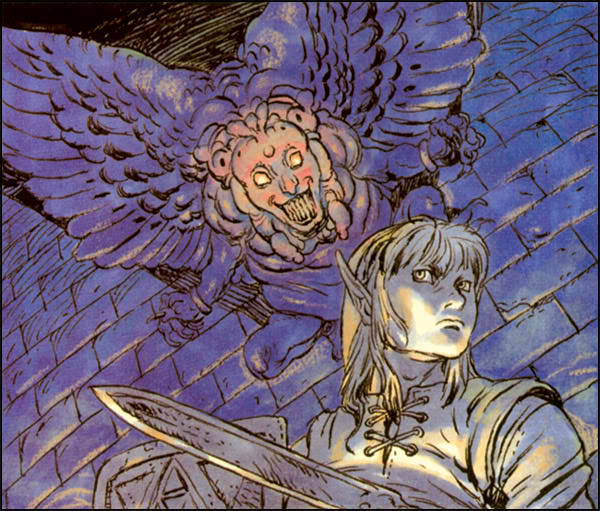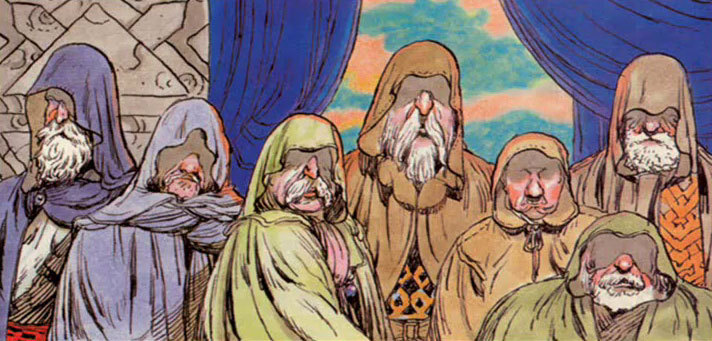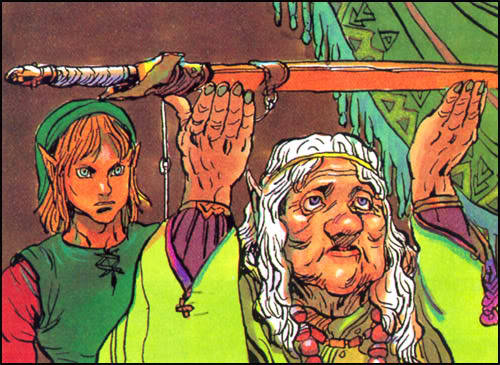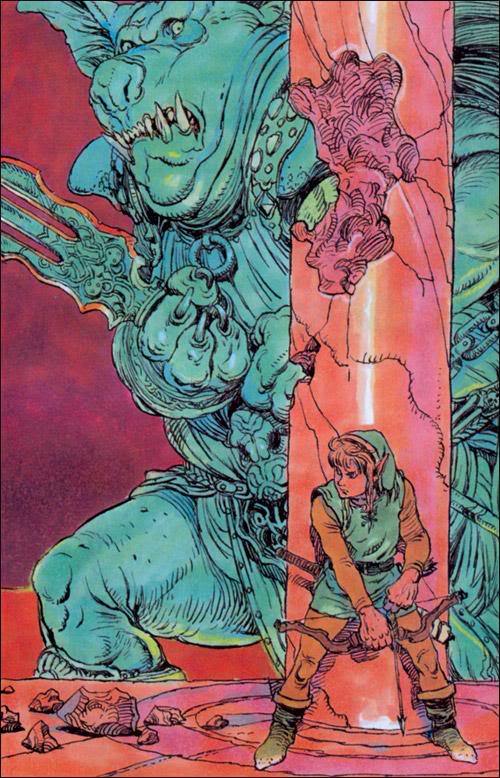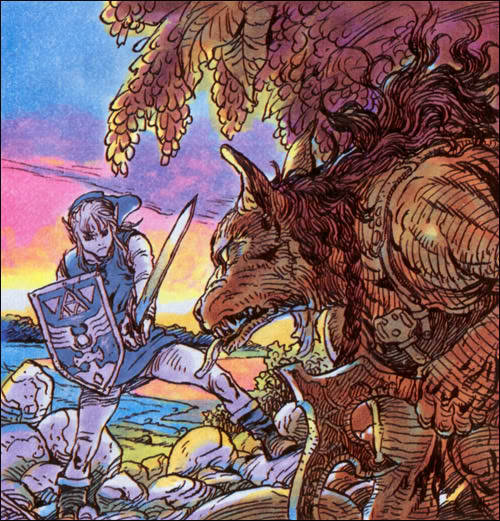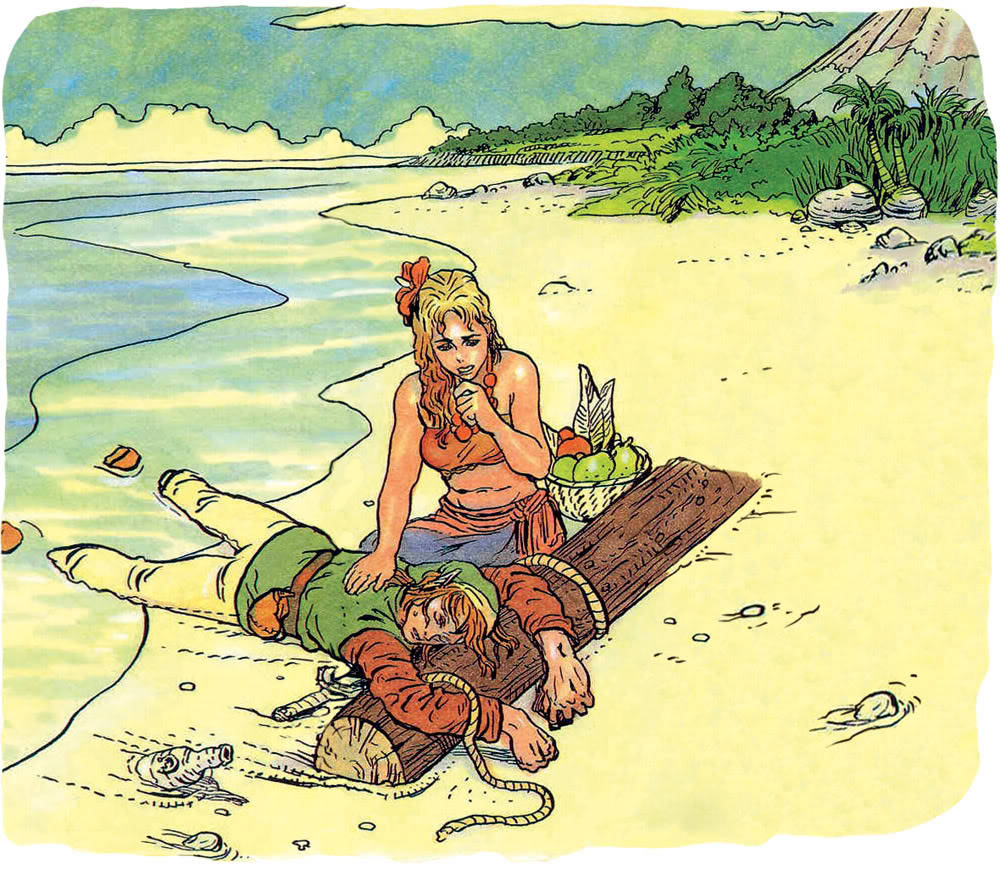By your logic they shouldn’t count because they vary in style.
That's not my logic at all.
On the contrary, I'm saying that for the early games all the concept drawings and promotional art backs up the visuals of the games since the graphics were so primitive it was hard to convey an artistic style or tone. But which one do think was ever meant to represent the look of the game in the player's imaginations more? Concept art used to assist in visualization during development or promotional art sold with the games?
Talking animals, dancing fish, singing frog, even if you made the artstyle realistic it would still be a cartoony game.
It's... fantasy. Heck, in LA even in the context of the fantasy it's a fantasy since Link's dreaming it.
This is like arguing that the Lord of the Rings films got it wrong because they're live action filmed on location.
Except not a single one of the images you shared were ever displayed in the first three games
yeah? I... know. I never said they were.
Outside material still contributes to the aesthetic of the game, especially the early ones for reasons already mentioned.
so even if the gameboy could display them the intent never would’ve been to do so.
so the gameboy couldn't display an image so that's proof that the image was never intended to be displayed in a game it was never displayed in...
this logic is asinine.
those artworks were for manuals and promotional items... given the primitive nature of the graphics technology back then, that artwork contributes greatly to the aesthetic of the game they're meant to represent.
You literally used your own still images
Wait. Those are my drawings? And here I thought some other guy drew them. Man, I'm literally better at drawing that I thought.
These aren’t realistically proportioned in the slightest
Not completely. Not realistically proportioned in the slightest is the freakishly large head on the freakishly small body with freakishly small legs and freakishly large face that Waker's character aesthetic sports.
You're splitting hairs. I never said those drawings were photorealistic, indistinguishable from reality. They're almost too simple and vague to draw a conclusion on, which I suppose makes them cartoons by default. But then is this really how we're supposed to envision the adventures in those early games to look like?
Even if so, would it not be too terribly outrageous to insist that the presentation become more sophisticated as rendering technology advances?
You are. Maybe not 100% but you are.
So even a little bit of grounding is completely unacceptable in a video game? Then why do any of these characters have legs? Legs make too much sense as a means of conveyance. Legs are too realistic.
Let's see... relatively proportionate body structure. Legs and arms proportionate to the torso. Average sized head, hands and feet (which is rather uncharacteristic for a clown). Facial features all relatively to scale. Nose maybe too large, but then there are some pretty big schnozes. Mouth too large as well but then I'll assume that's makeup, not his lips. Pot belly not uncommon among... most people. Skin tone represented naturally. Okay, that huge chin with its sharp corners is totally unnatural. Never liked that aspect of Rusl's design either.
No. Not like this at all.
Actually, I never really did like the character design of TP. It works for the alien monsters and characters like Zant and Midna, the twili and of course the monsters of Hyrule and the Gorons and Zora, but I never liked it in the Hylians. The world is presented believably enough and everything sports natural colors and tones, but then the character modeling is obtuse and... kinda brings me out of it. The Hylians weren't ever so fantastic that they warrant exaggerated features. They were always just people with pointy ears up until Wind Waker (whose style is so obtuse that the look doesn't even make sense in a fantasy context).
It's still tame compared to other titles. TP is not going for a cartoony aesthetic. And even though their appearance doesn't jive with the rest of the more grounded presentation, neither are the characters.
Anyone else find it funny that the person calling me edgy is also the person defending the artstyle of a game where you fight shadow monsters as a werewolf inside of a place called the “Twilight realm”?
Look. I'm really... really sorry that you can't stomach that someone has their own aesthetic preferences and that just grinds your gears so hard to the point that you have to have an internet argument with them just for the sake of arguing against it. But I don't find that funny. I find it sad.
It’s almost like the series was always meant to be like that and the manuals are a mere afterthought
Oh sure. Ten years and half a dozen installments worth of different graphical arrangements largely limited by display technology purposely supported by drawn visuals featured in ads and articles and game manuals, followed by a couple decades worth of vastly differing presentations across no less than five 3D capable consoles and you can easily come to the conclusion that the series was always meant to be a hyper-stylized cartoon and the manuals never mattered.
Or... it could be that nintendo simply presents their visuals however they want at the time.
None of the games you listed had artstyle as a selling point
Who cares what they're being sold as? So we can't even talk about visual presentation unless it's a bullet point on the back of the box? Then what's even the point of this discussion?
That being said all three of the games listed look leagues better than TP.
If you disabled the shader effect, Bratz doll playsets would look better than all three of those games, making TP look better by a wide margin.
WW and SS do it perfectly. TP is the one that has a boss in n a dimly lit cave turn into a goofy bouncing eyeball during a completely serious scene.
Alright. If you want to cheery pick, I'll play.
Wind Waker has a slapstick moment right before Link is literally catapulted into the evil overlord's dark fortress to rescue his sister.
Skyward has a goofball supporting character who is so over the top it's impossible to tell if he's meant to be a serious antagonist....
... then Link fights Barney the Purple Dinosaur who is supposed to be the big bad ultimate evil imprisoned for all eternity lest it bring about the end times by... stabbing it in its wobbly balloon toes until they pop.
The structure and gameplay have more or less been the same throughout the series in fact the games that change the gameplay the most are mostly in those first 6 games you mentioned. Zelda 2, OoT, and especially majoras mask were all incredibly different from the rest gameplay wise. Since then most games have been relatively similar, falling under three categories: 2D, 3D, and multiplayer.
I can agree with this mostly, especially in regards to Zelda 2 and Majora being the outliers. But I would also add BotW and Sword to that list. It was really ALttP that established the formula that would only get hammered down harder through to Twilight Princess, then broken by Suckward and BotW (for better or worse).
ALttP was itself an advancement on the mechanics of the first game, but was much more structurally linear. For instance, now bombable walls were clearly marked, lanterns (candles) could only be used on sconces, treasure chests held items instead of items being out in the open, items got increased functionality, etc. But most dungeons had to be completed in a set order, and progress wouldn't take place until certain conditions were met.
Like I said, the general gameplay has been the same throughout most of the series
True. BotW and Suckward are the only major deviations. But then AoL featured RPG leveling, Majora featured its time mechanic and scheduled side questing, Waker sported sailing... all of which were really just unique additions to the usual formula that didn't change anything fundamental.
By narrative I am referring specifically to backstory and lore. Wind Waker went off on a major continuity tangent and Suckward messed with the lore in ways that pointlessly adds massive complications.
As for tone and visual style.... that’s not a bad thing.
No. It's not. But I'll continue to dislike the way ninty is going with presentation simply because it doesn't appeal to me. It detracts from the experience. And so do a lot of things ninty is doing in more recent Zelda titles.
As long as certain elements stay the same, a different artstyle makes each game more unique
That's a fair point, but I would personally prefer that the series establish a cohesive presentation. Aaand... it appears to me as though they've finally settled on it. It's not what I can appreciate, but it's what we've got.
If you showed me black opps 2 and modern warfare 3 side by side and asked me to tell you which was which you could never do it
I would rather argue the merits of a title based on how it plays or how it tells its story. That said, the presentation in the Zelda series is a major factor for me. Essential, even. I can't get invested in the adventure when it looks a certain way.


